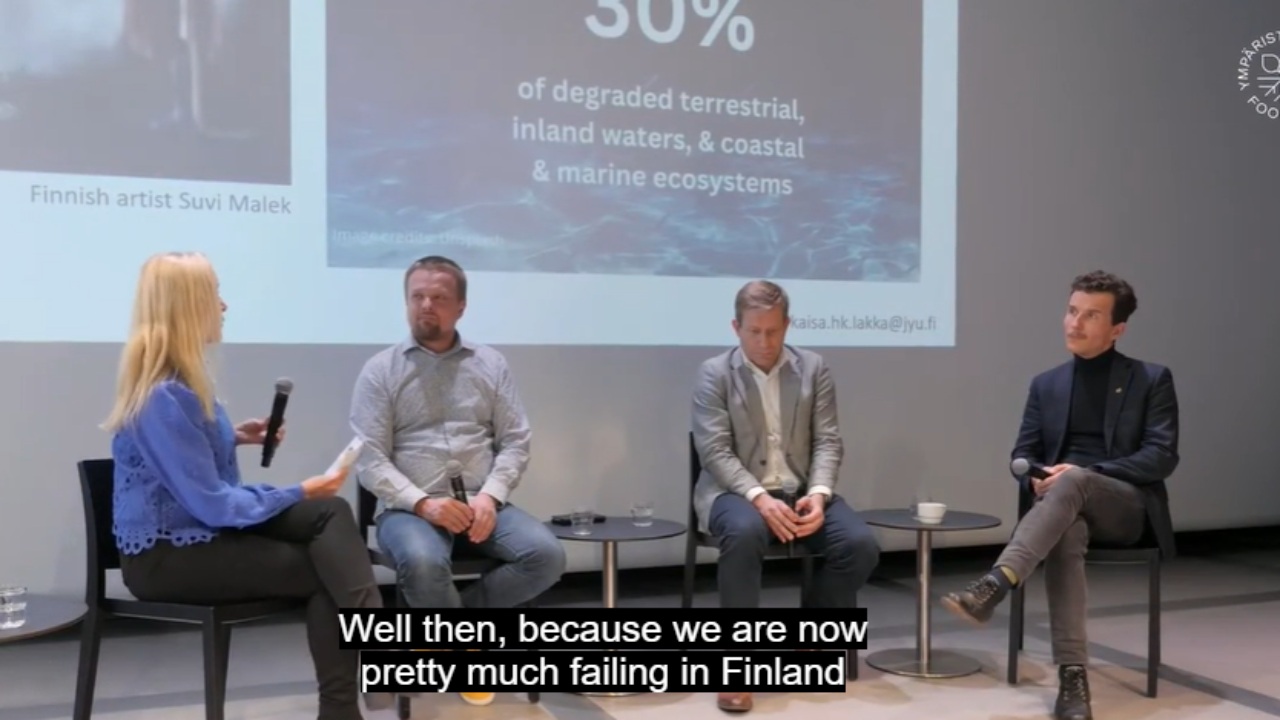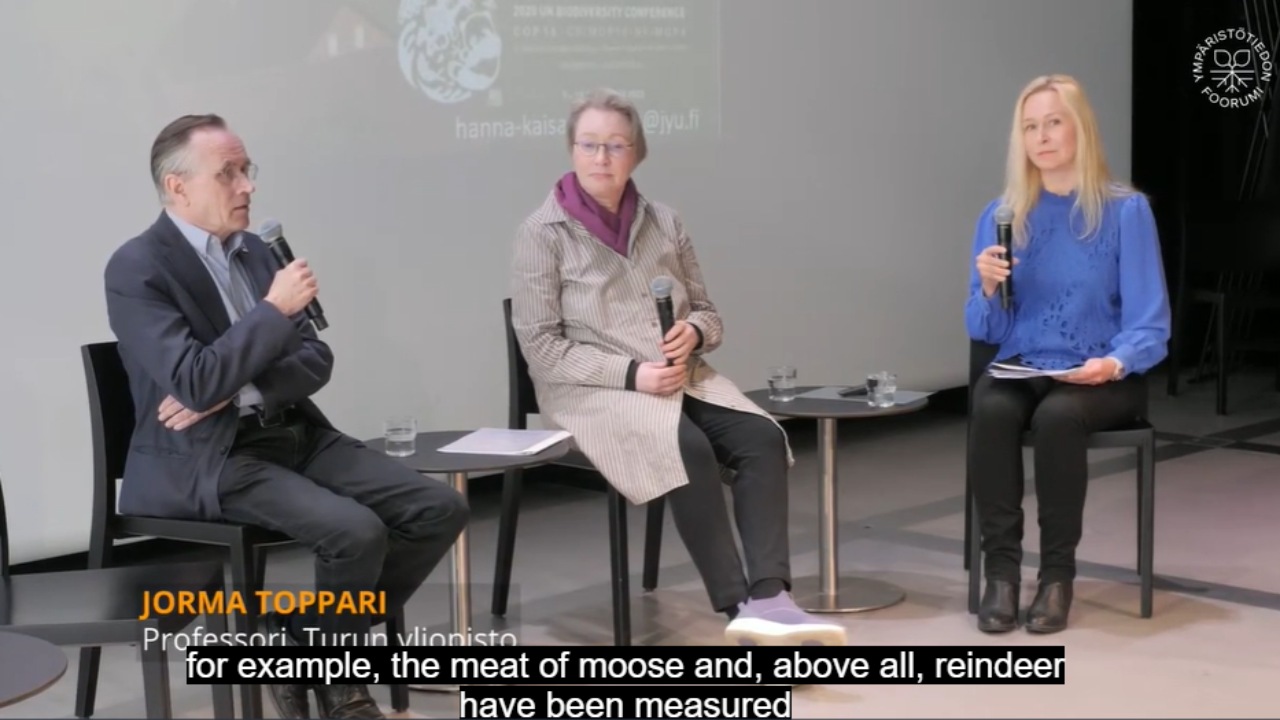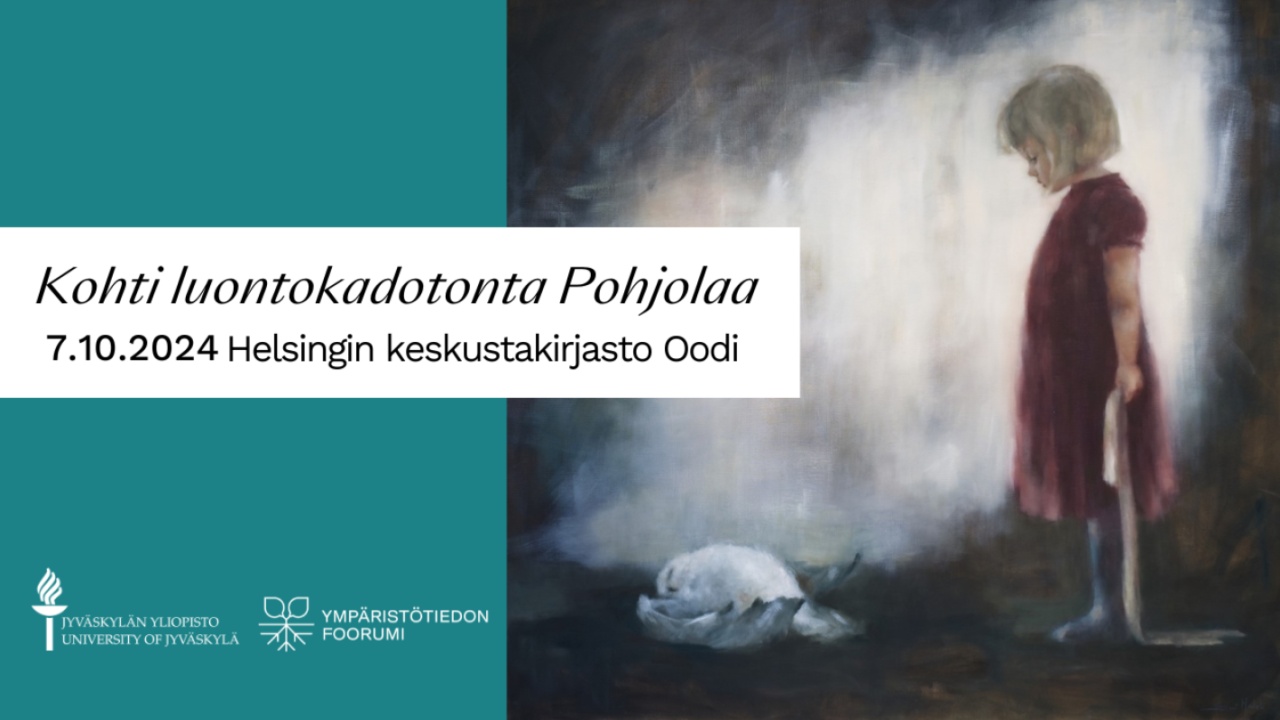The third NBF workshop Kohti luontokadotonta Pohjolaa (Towards a nature Loss-Free North) was held in Helsinki on October 7, 2024 and its objective was to explore specific GBF targets and their implementation in Finland. Participants were representatives from Finnish Ministries, institutions, companies, FIGBC, RTT, expert groups, GTK, LUKE, SYKE, TUKES, Finnish Nature Panel, WWF, LUOMUS, universities (HY, JYU, TY, OY; LUT), Metsähallitus (State-owned forestry company) and other. Presentations explained the structure of the GBF as well as the status of implementation in Iceland and Finland. These were followed by a survey given to conservation scientists and experts about Target 3 (“30 by 30”). The preliminary results identified will as the main barrier to successful conservation in land, sea and inland waters and underlined the importance of equal protection for all biomes. Two panel discussions focused on the limited freshwater protection in Finland (Target 3: 30 by 30) and the impacts of pesticide use on human health and biodiversity. Recordings from the workshop’s presentations and panel discussions are available, see below.
Main Outcomes
- Finland has great potential to conserve freshwater ecosystems and species and a great responsibility for freshwater resources in Europe. Conservation actions should treat all biomes equally—land, sea, and inland waters.
- Endangered species (Red Listed Species) should not be hunted. For example, the Common Eider was listed as an endangered species in Finland in 2019. However, 4113 common eiders were hunted between 2019 and 2023. International and national laws should not allow hunting or fishing of endangered species. Likewise, Finland should update the hunting law and remove Red Listed Species from the list of hunted species.
- Chemical taxes are urgently needed to lower environmental contamination, mitigate biodiversity loss, and avoid chemical risks for humans. Finland should follow Denmark’s example in implementing pesticide taxes on harmful chemicals which lowers environmental contamination, mitigates biodiversity loss, and avoids chemical risks for humans. Chemical treatments in nature are not the best way to eliminate invasive or harmful alien invasive species. Chemicals do not select the target species but kill or harm many other species and lower the vitality of ecosystems. Alternative methods should always be considered the first and the best practice to address invasive species-related problems.
- Safety and biodiversity are linked. Countries’ actions to improve internal safety may impact biodiversity, and peacetime sabotage can have an unwanted effect on biodiversity. Defence and sabotage actions affecting Nordic biodiversity must be recognised, and their harmful impacts on biodiversity should be compensated in Nordic countries.
- The fact that policymakers can exert agency in many ways—through laws, regulations, and biodiversity funding—goes hand in hand with their ability to change the well-being of Nordic nature. All these aspects of policymaker actions come with a responsibility to safeguard the present and future Nordic nations and nature.
Recordings of presentations
- Opening speech and welcome, Towards a Nature Loss-Free Nordic, researcher Hanna-Kaisa Lakka, University of Jyväskylä
- Why the Biodiversity crisis is at least as important as the Climate crisis, Professor Katherine Richardson, University of Copenhagen
- Experiences and lessons learned about implementing global biodiversity strategies and action plans in Iceland, including unique needs from Iceland, Professor Skúli Skúlason, Hólar University and Icelandic Museum of Natural History, specialist Rannveig Magnúsdóttir, BIODICE and specialist Rebecca Thompson, BIODICE
- What is going on in the implementation of international and national biodiversity agreements, politics and policies in Finland? Senior specialist Joona Lehtomäki, Ministry of Environment, Finland
Recordings of panel discussions
Panel discussion 1: Where to Find Momentum to Halt Biodiversity Loss? with English subtitles

Panel discussion 2: Is Environmental Chemicalization Also a Threat to Humans? with English subtitles

More information on the Nordic Biodiversity Framework
